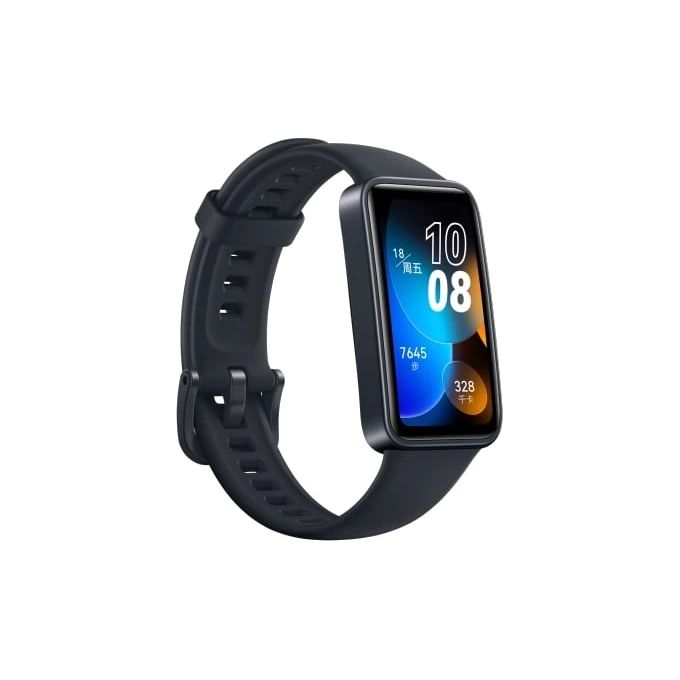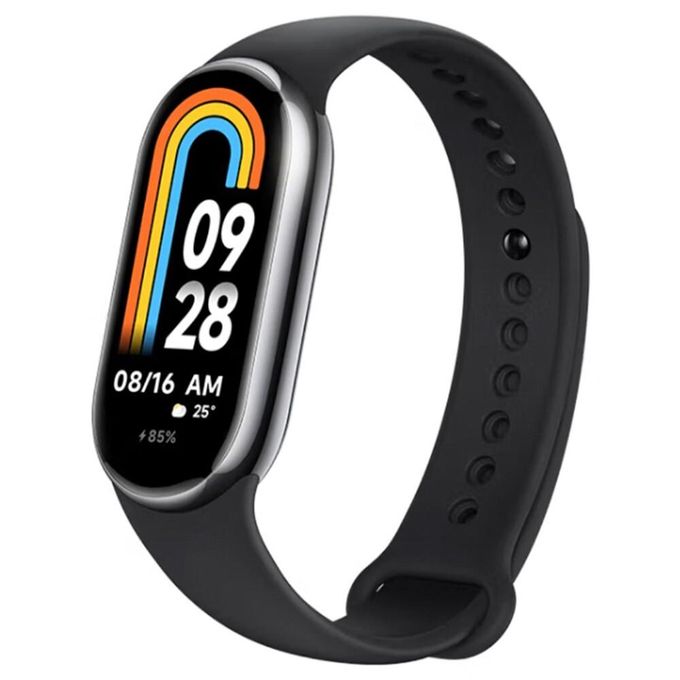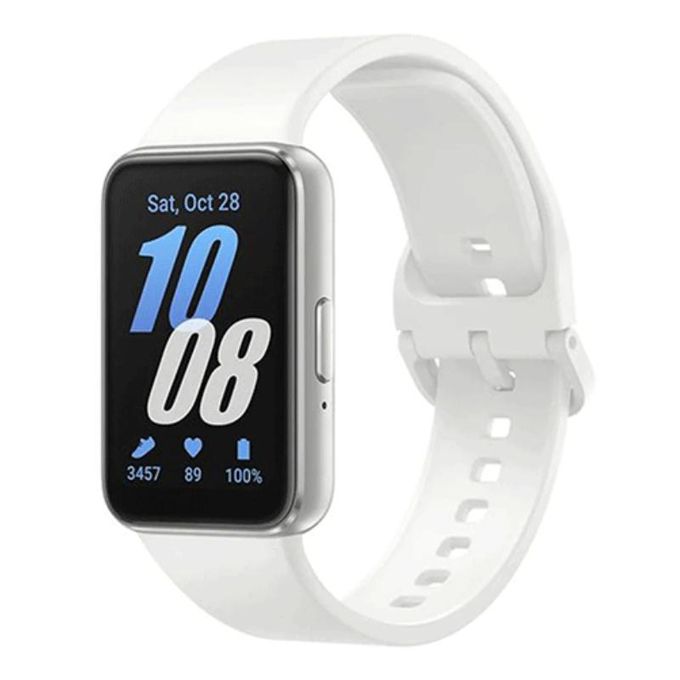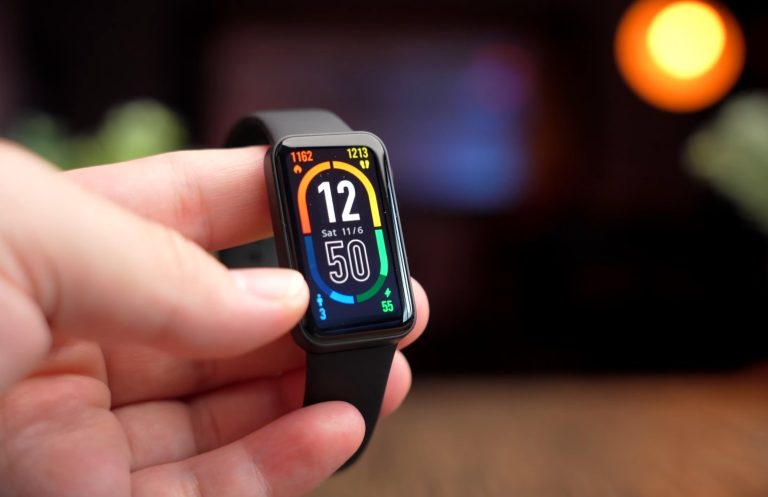Samsung just unveiled the Galaxy Fit 3 to take on a market that is dominated by players from Huawei, Amazfit, and Xiaomi. Even more obscure brands like Oraimo are now making very decent products in the market but which should you spend your money on in 2024?
In this post, we put the Huawei and Xiaomi Band 8 devices against the Samsung Fit 3 to see how they stack up against each other and which one you should buy. However, it is worth mentioning that I have only used two of the three products. We’re getting the Samsung Fit 3 soon so stay tuned for more content, insight, and perspective on the same.
Advertisement – Continue reading below
| Category | Samsung Galaxy Fit3 | Huawei Band 8 | Xiaomi Mi Band 8 |
|---|---|---|---|
| Materials | Aluminium, Silicone straps | High strength fibre polymer, TPU wristband | Metallic midframe, Easy-detachable Straps (Gold, Graphite Black) |
| Shape | Rectangular | Curved, rectangular | Pill-shaped display within a standard rectangle |
| Dimensions | 42.9 x 28.8 x 9.9 mm | 44.35 x 26 x 8.99 mm | 1.62 inches screen (490 x 192 pixels) |
| Physical Buttons | 1 | 1 | None |
| Display Type | AMOLED | AMOLED | AMOLED |
| Resolution | 192 x 490 pixels | 194 x 368 pixels | 192 x 490 pixels |
| Screen Size | 1.6 inches | 1.47 inches | 1.62 inches |
| Weight | 18.5 grams (without strap) | 14 grams (without strap) | 22 grams (without strap) |
| Sensors | Accelerometer, gyroscope, heart rate, SpO2, barometer, ambient light sensor | Accelerometer, gyroscope, blood oxygen saturation, heart rate | 24/7 heart rate monitor, SpO2 sensor |
| Water-Resistance | 5 ATM + IP68 | 5 ATM | 5 ATM |
| GPS | Connected | NA | NA |
| Built-in Speaker | No | No | No |
| Microphone | No | No | No |
| NFC | No | Yes (China only) | Yes (China only) |
| Music Storage | No | No | No |
| Connectivity | Bluetooth 5.3 | Bluetooth 5.0 | Bluetooth 5.3 |
| Battery Type | 208 mAh Li-po | 180 mAh Li-po | 190 mAh Li-po |
| Battery Life | Up to 13 days (typical usage) | 14 days with normal use, 9 days with heavy use | Up to 16 days (typical mode), Up to 6 days (AOD mode) |
| Operating System | FreeRTOS | HarmonyOS 2 | FreeRTOS |
| Colors | Prism Crush White, Pink, Dark Gray | Emerald Green, Magic Night Black, Cherry Pink, Vibrant Orange | Available in Gold and Graphite Black |
| Price in Kenya | Around $100 | Around $50-$90 (depends on region) | Around $50-$90 (depends on region) |
Huawei Band 8, and Xiaomi Smart Band 8 are two rather popular fitness trackers that can monitor your health and activity levels. Samsung Galaxy Fit 3, on the other hand, comes from an OEM with a tried and tested track record for making solid smartwatches and arguably the best smartphones in the market.
These devices have some similarities and differences in terms of design, performance, and functionality and these are the pillars I will be looking at in this post.
Design
All three smart bands have a rectangular shape and a silicone strap. The Samsung Galaxy Fit 3 has a 1.61-inch AMOLED screen with a resolution of 256*402 pixels, while the Huawei Band 8 has a 1.47-inch AMOLED screen with a resolution of 194 x 368 pixels, and the Xiaomi Smart Band 8 has a 1.56-inch AMOLED screen with a resolution of 152 x 486 pixels.
Advertisement – Continue reading below



The Samsung Galaxy Fit 3 is the heaviest (18.5g) and the thickest (9.9mm) of the three, while the Huawei Band 8 is the lightest (14g) and the Xiaomi Smart Band 8 is the slimmest (8.1mm). All three smart bands are water-resistant up to 5 ATM.
Performance
All three smart bands have 16MB RAM and a Bluetooth 5.x connection. The Samsung Galaxy Fit 3 has a 208 mAh battery that can last up to 13 days on a typical charge, while the Huawei Band 8 has a 180 mAh battery that can last up to 14 days on normal use, and the Xiaomi Smart Band 8 has a 125 mAh battery that can last up to 14 days on a power-saving mode.
The Samsung Galaxy Fit 3 and the Huawei Band 8 have NFC support, while the Xiaomi Smart Band 8 does not. The Samsung Galaxy Fit 3 reportedly has wireless charging, while the Huawei Band 8 and the Xiaomi Smart Band 8 do not. The Samsung Galaxy Fit 3 runs on a proprietary OS, while the Huawei Band 8 runs on HarmonyOS 3.1, and the Xiaomi Smart Band 8 runs on Xiaomi’s skin.
Functionality
All three smart bands can track more than 100 sports modes, such as running, cycling, swimming, and more. They can also measure your heart rate, blood oxygen, sleep quality, stress level, and calories burned.
The Samsung Galaxy Fit 3 and the Huawei Band 8 can track your elevation and VO2 max, while the Xiaomi Smart Band 8 cannot. The Samsung Galaxy Fit 3 and the Xiaomi Smart Band 8 can also monitor your menstrual cycle and fertility, so can the Huawei Band 8.
All three smart bands can display notifications, calls, messages, and weather updates from your smartphone. They can also control your music playback and camera shutter.
Bottomline
All three OEMs also make smartphones and these fitness trackers are built to play nice in the respective ecosystems. Huawei’s HarmonyOS has been revered as the next Apple in terms of cross-device integration and the Huawei Band 8 plays right into that.
Advertisement – Continue reading below
The same applies to Samsung and the Samsung Health features baked into the Samsung Galaxy Fit 3. Xiaomi’s Mi Band 8 plays well with Xiaomi, Redmi, and Poco devices so if you’re in that ecosystem, it might be worth getting the corresponding fitness tracker.
However, it is important to note that these devices still play well with Android devices as all you need to do is install the companion app and give it the appropriate permissions.
Pricing and Availability
The prices and availability of these smart bands may vary depending on the market and the merchant. You can check the latest prices and offers from the following links:
